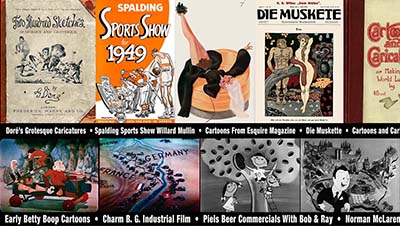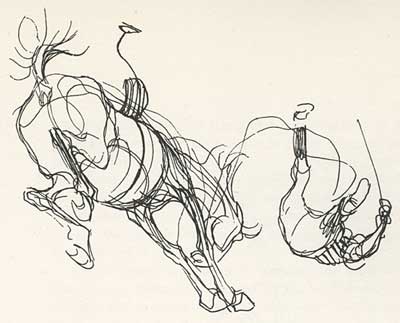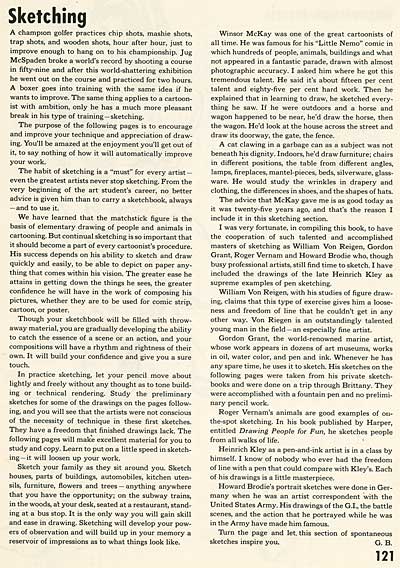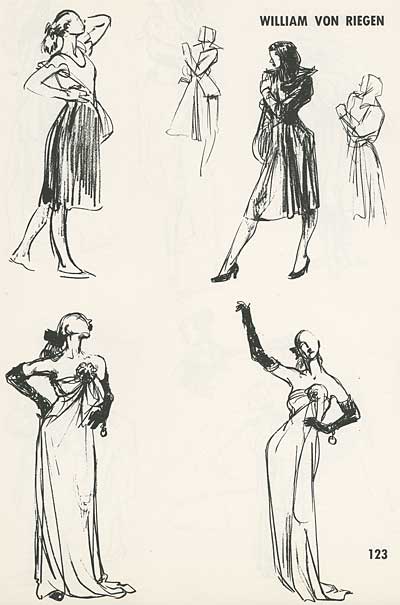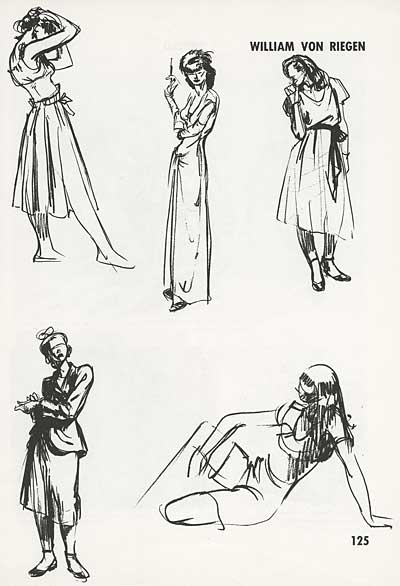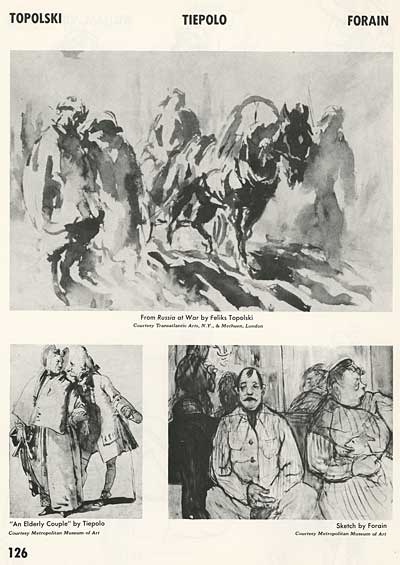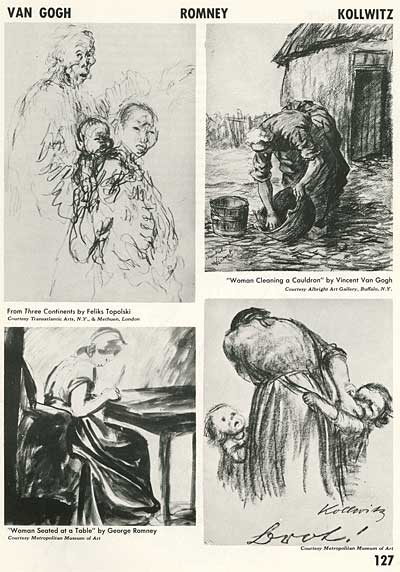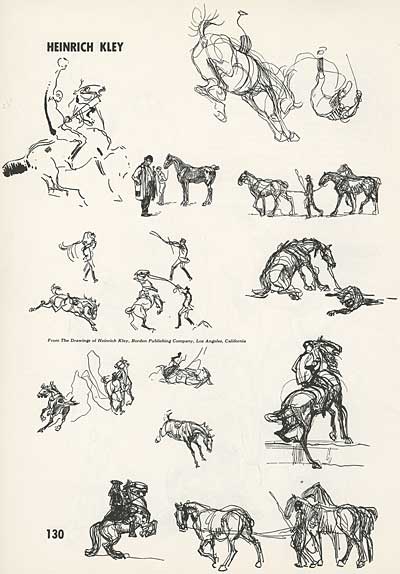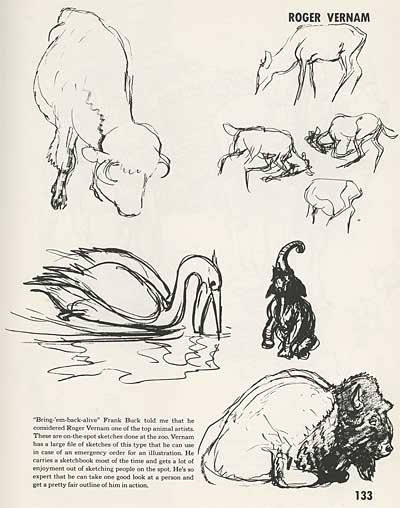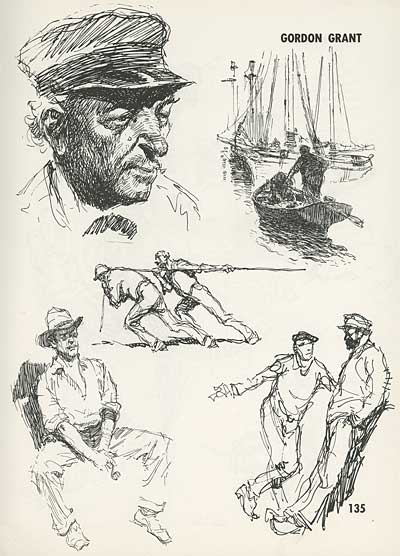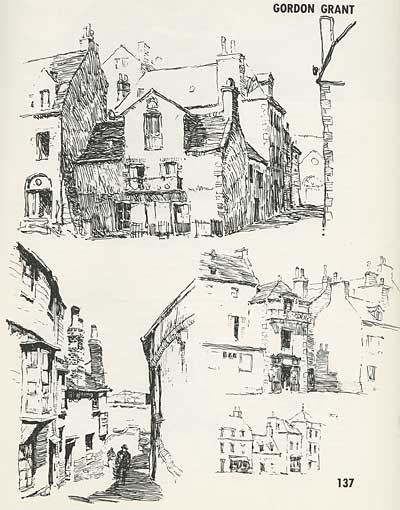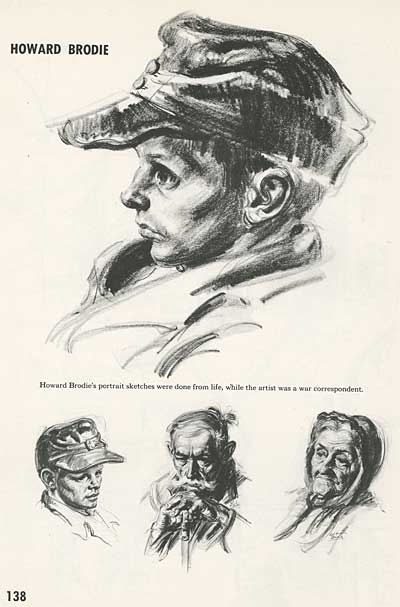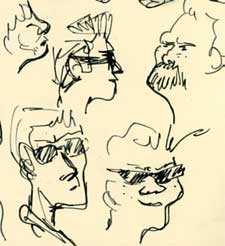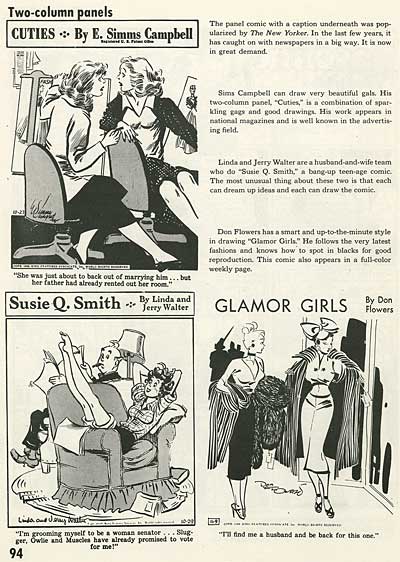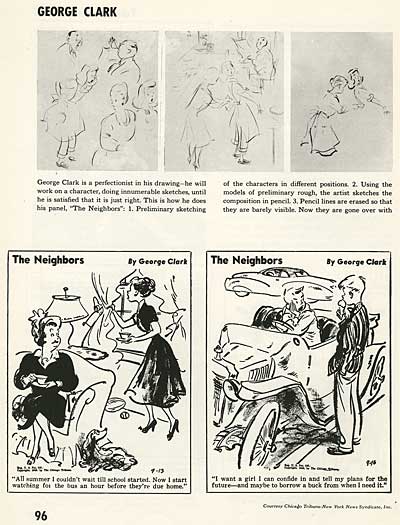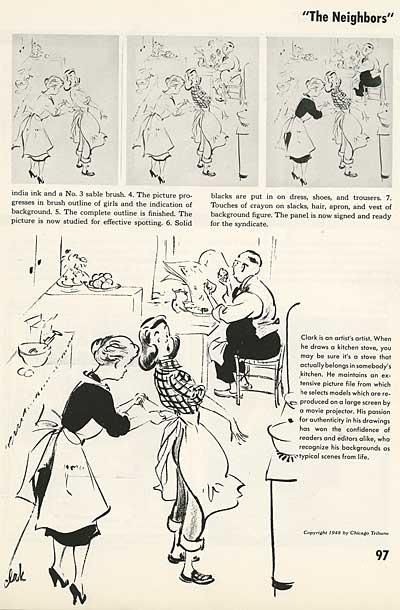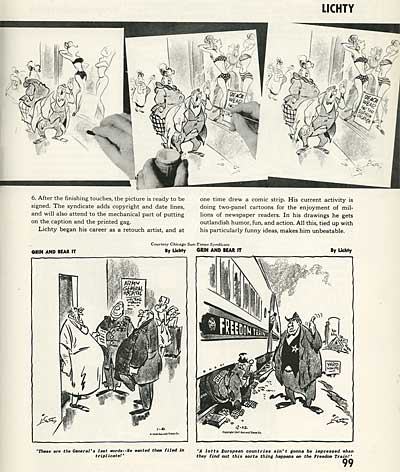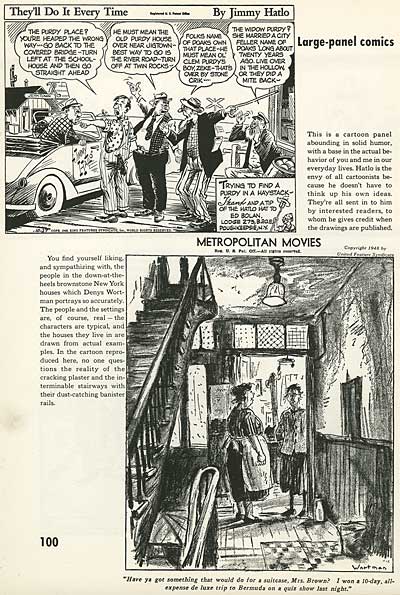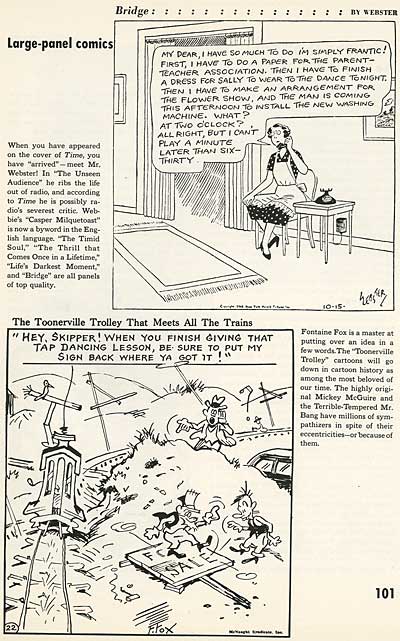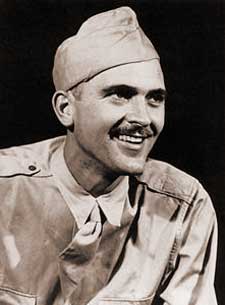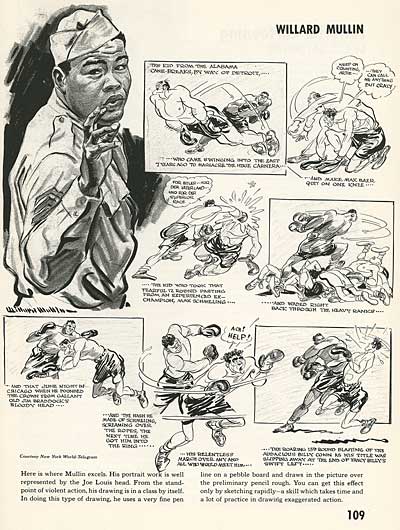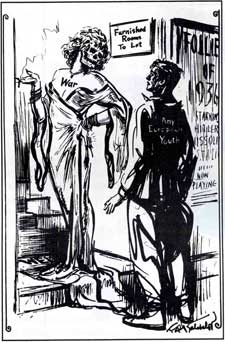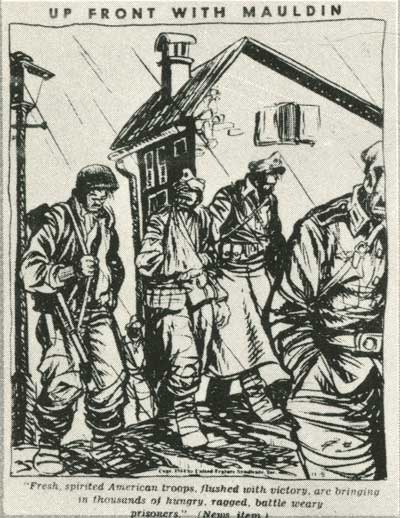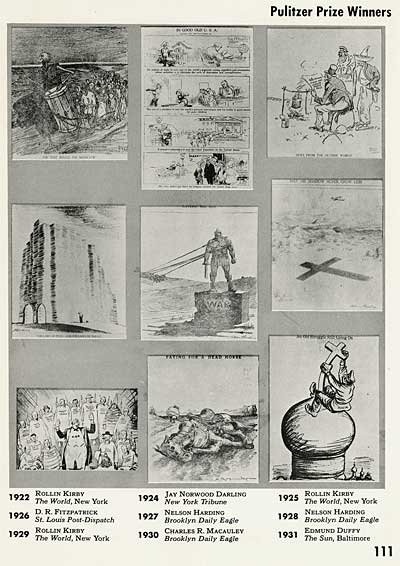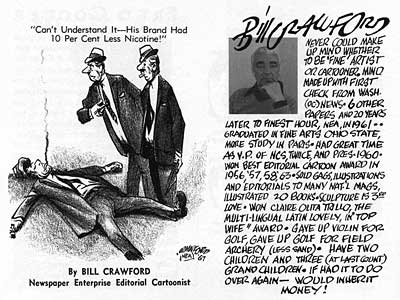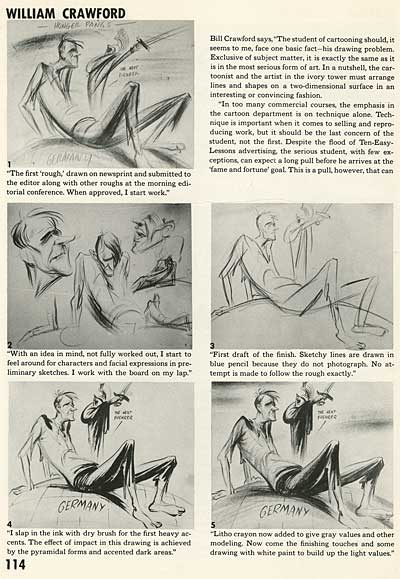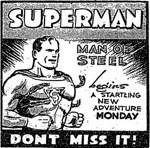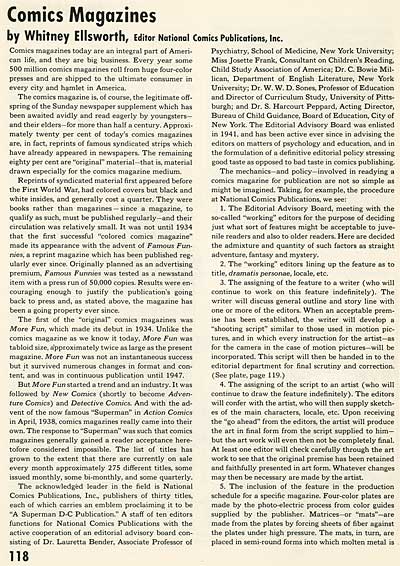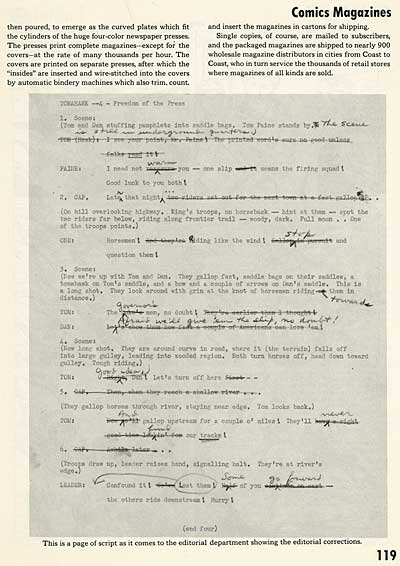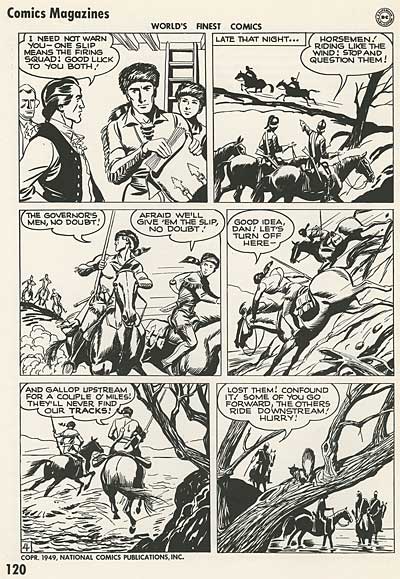
Thanks to Clarke Snyder for this great Hurst ad.
We continue our series of posts on Gene Byrnes’ Complete Guide To Cartooning with the section dealing with…
Introduction by Charles D. Rice
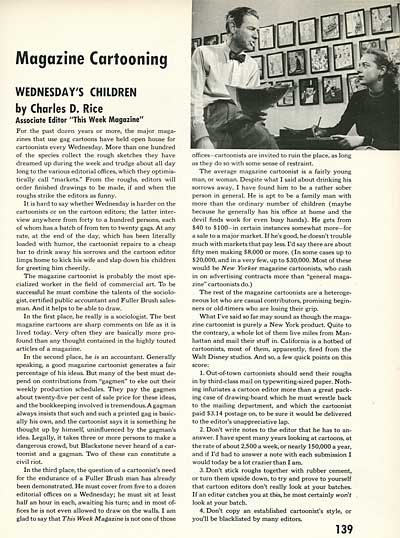
Perry Barlow worked along side a star-studded group of cartoonists at The New Yorker which included, among others, James Thurber, Peter Arno, Gardner Rea, Charles Addams, Whitney Darrow Jr, Sam Cobean and William Steig. From its inception, The New Yorker was, as its founding editor Harold Ross described it, "a reflection in the word and picture of metropolitan life". The images were equal with the words, and this magazine contributed greatly to the development of cartooning. Here, Barlow discusses his ideating process for a Halloween cover.
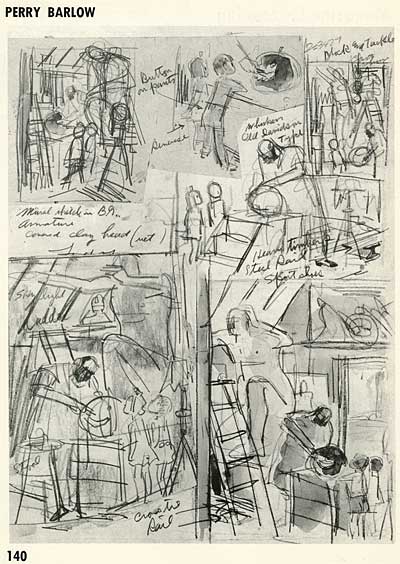
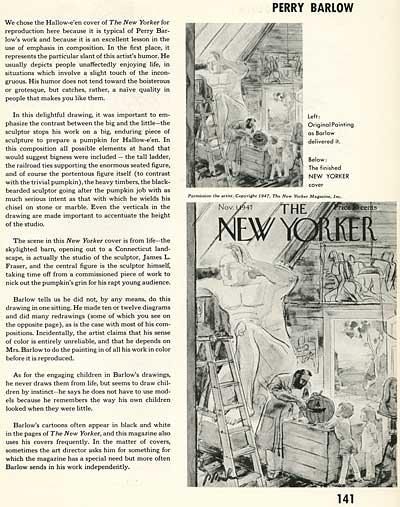
Von Riegen was featured in our previous post from this book, Part Three: Sketching. His gesture drawings were greatly admired.


Earl Oliver Hurst has been profiled extensively at Shane Glines’ excellent Cartoon Retro site. Hurst was primarily a "pretty girl" cartoonist whose work appeared in Colliers, True and American Weekly. His ads for Jantzen are particularly popular among current cartoonists. If you would like to see more, there is a great book on Hurst at Amazon… The Art Of Earl Oliver Hurst



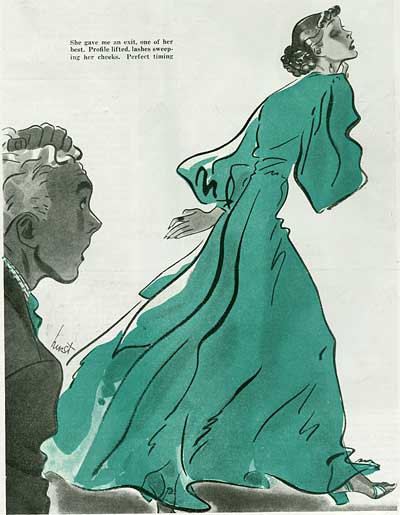

H. Kurt Stoessel was born in 1909 in Germany, and studied at the Art Institute of Chicago. He was an illustrator and art director for several national magazines including The Atlantic. He lived and worked in Boulder, Colorado his entire career, and passed away on this day in 1984.

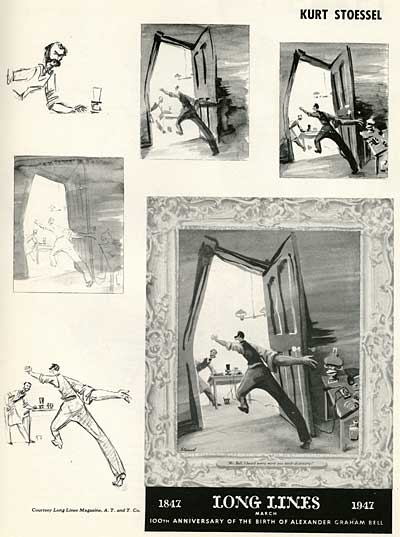

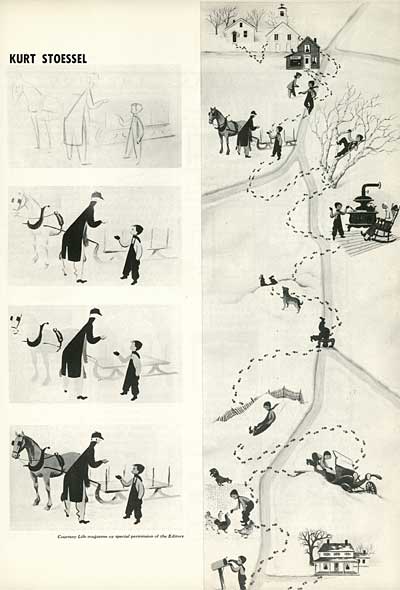
You may not know the name of Fred Cooper but you certainly have seen his work. He was a letterer, poster designer, illustrator, cartoonist, writer and teacher. Leslie Cabarga describes him as the original "clip art" artist- his "big head" cartoon characters were seen in dozens of magazines of the teens and twenties, and continue to be in use to this day. For more on this influential cartoonist, see Allan Holtz’s tribute in Strippers, and Cabarga’s book The Lettering and Graphic Design of F.G. Cooper

We mentioned Gluyas Williams was one of the most prolific and influential cartoonists of the 1920s. His work appeared in The New Yorker, Colliers and Life. Robert Benchley wrote, "I believe that Williams’ drawings will be preserved for expert contemplation both as data on the manners and customs of our day, and as graceful and important examples of its art." For more great work by cartoonist Gluyas Williams, see David King’s gluyaswilliams.com

Robert Osborn was a cartoonist whose style influenced the UPA artists greatly. He worked with John Hubley on the film, Flat Hatting. He also did a great deal of illustration for the War Department, which we will be featuring in an upcoming post.

Bartoli’s ink drawings appeared on the covers of quite a few issues of Holiday magazine in the late 40s and 50s. I haven’t been able to find out much information about him. Perhaps someone out there knows and will post some biographic info on him to the comments below.

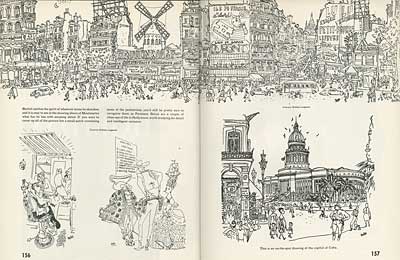
Michael Berry contributed pretty girl cartoons to Pictorial Review, Esquire, Liberty and The New Yorker.


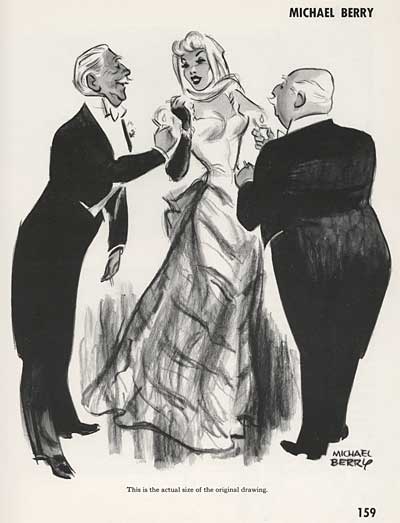
John Ruge’s elegant girl drawings appeared in Colliers in the late 40s and Playboy in the early 50s. His comic about an Irish Setter named Clancy was also popular.
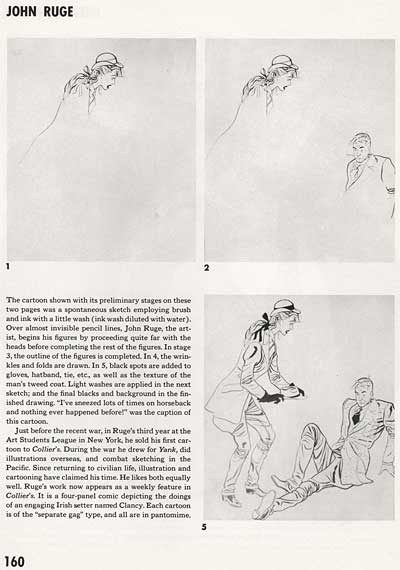

Ralph Stein was the author of a collection of pinup girl art titled The Pinup From 1852 to Now. He wrote the Popeye newspaper comic in the 1950s, and was an avid classic car enthuiast. Stan Hunt was a regular contributor to The New Yorker. He attended the New York School of Art and apprenticed under Willard Mullin. He passed away in 2006 at the age of 77.
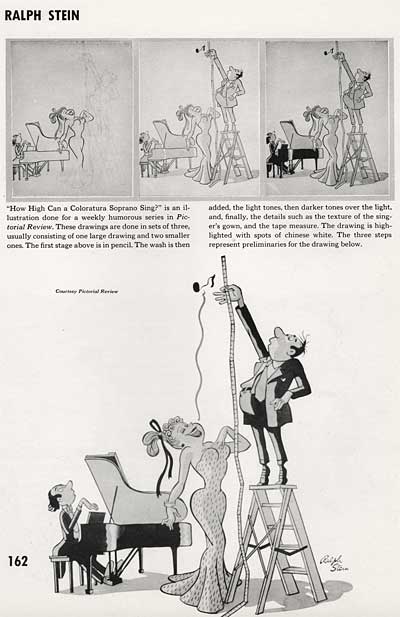

Richard Sargent contributed images to Pictorial Review and The Saturday Evening Post.
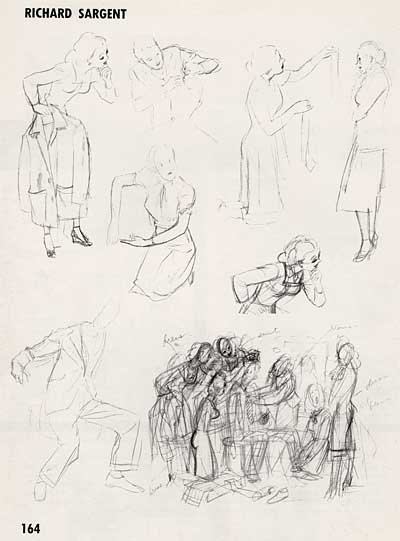

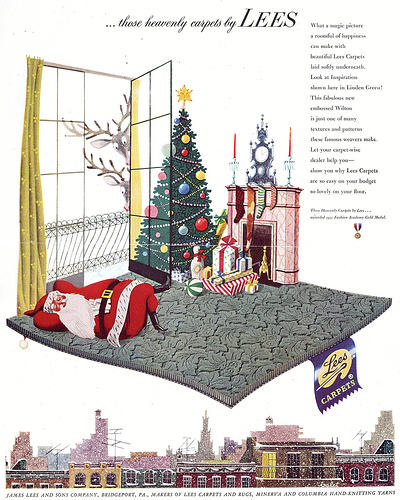
Magazine Illustration by Jan Balet
(See Lief Peng’s Flickr set for more images by Jan Balet.)
Jan Balet was a childrens book illustrator who also did artwork for several women’s magazines.


Richard Taylor was a cartoonist for The New Yorker and Playboy. Frank Owen was a cartoonist for The Saturday Evening Post He was the one who came up with the original story idea for the Disney’s cartoon, Morris, the Midget Moose.

By Don Herold


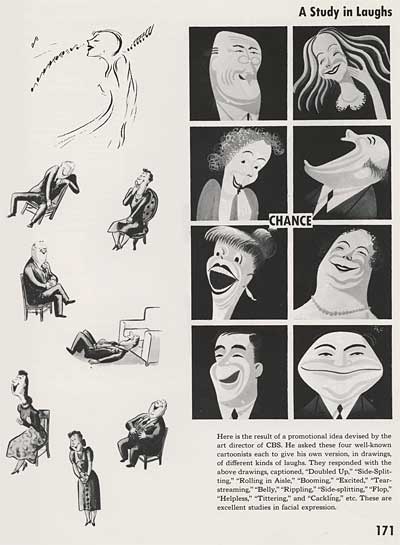

Over the past half century, Roy Doty has been a cartoonist and illustrator with over 60 children’s books to his credit. He was awarded a Reuben by the National Cartoonist Society in 2006. See RoyDoty.com to see what he’s up to lately.

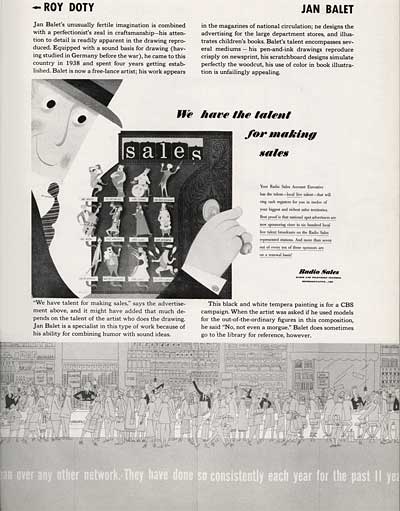
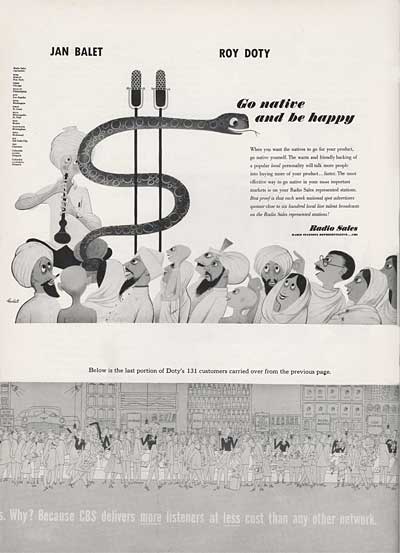
Many thanks to Marc Crisafulli and David King for sharing this great book with us.
Stephen Worth
Director
Animation Resources
This posting is part of the online Encyclopedia of Cartooning under the subject heading, Magazine Cartoons.
THIS IS JUST THE TIP OF THE ICEBERG!
Animation Resources has been sharing treasures from the Animation Archive with its members for over a decade. Every other month, our members get access to a downloadable Reference Pack, full of information, inspiration and animation. The RefPacks consist of e-books jam packed with high resolution scans of great art, still framable animated films from around the world, documentaries, podcasts, seminars and MORE! The best part is that all of this material has been selected and curated by our Board of professionals to aid you in your self study. Our goal is to help you be a greater artist. Why wouldn’t you want to be a member of a group like that?
Membership comes in three levels. General Members get access to a bi-monthly Reference Pack as well as a Bonus RefPack from past offerings in the in-between months. We offer a discounted Student Membership for full time students and educators. And if you want to try out being a member, there is a Quarterly Membership that runs for three months.
JOIN TODAY!
https://animationresources.org/membership/levels/
FREE SAMPLES!
Not Convinced Yet? Check out this SAMPLE REFERENCE PACK! It will give you a taste of what Animation Resources members get to download every other month! That’s 560 pages of great high resolution images and nearly an hour of rare animation available to everyone to download for FREE! https://animationresources.org/join-us-sample-reference-pack/
![]()
![]() Animation Resources depends on your contributions to support its projects. Even if you can’t afford to join our group right now, please click the button below to donate whatever you can afford using PayPal.
Animation Resources depends on your contributions to support its projects. Even if you can’t afford to join our group right now, please click the button below to donate whatever you can afford using PayPal.















